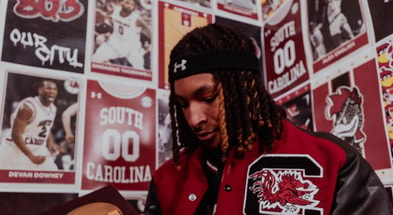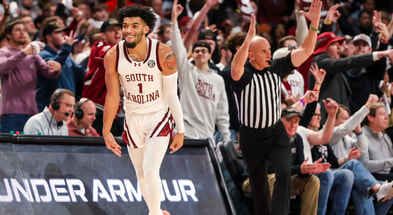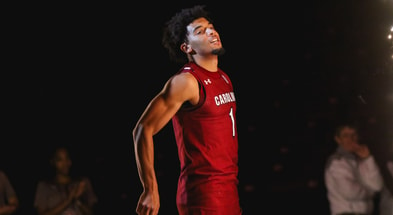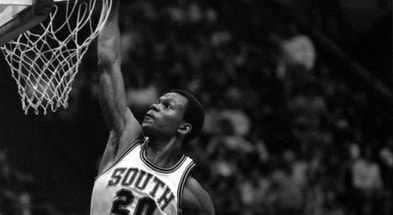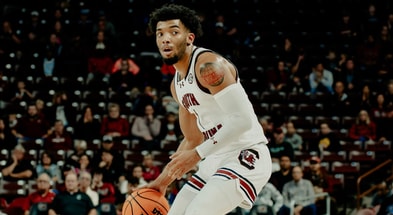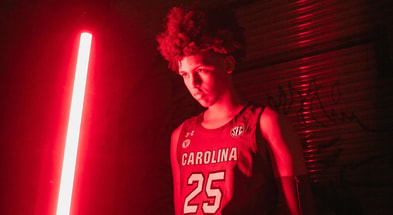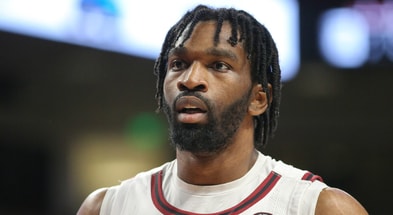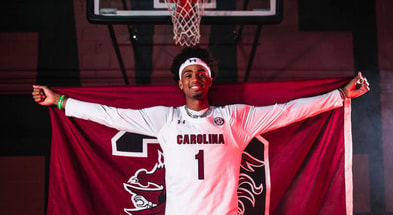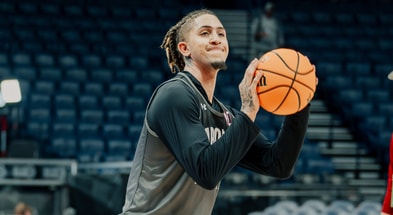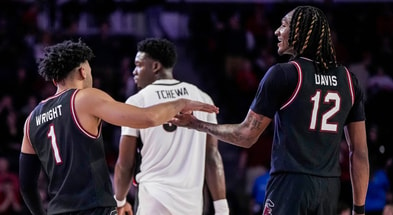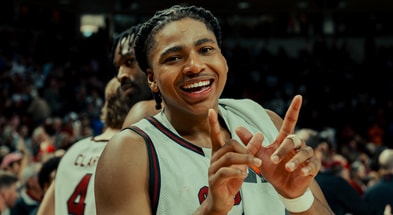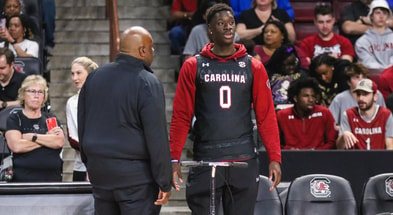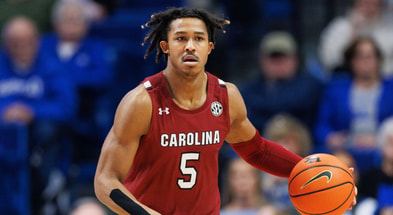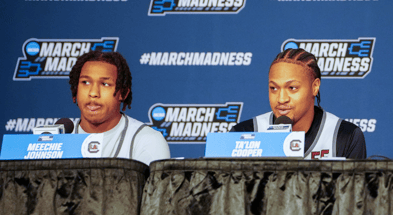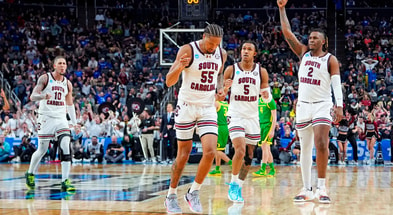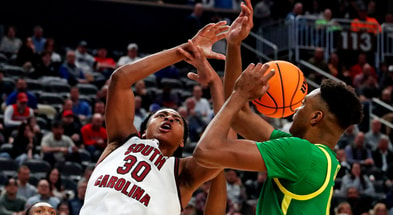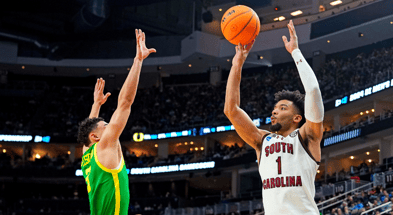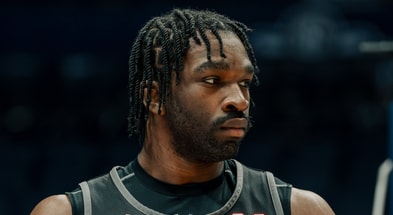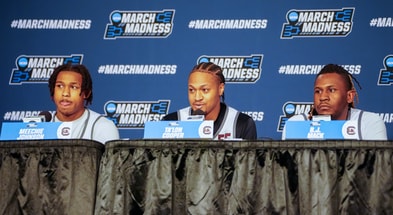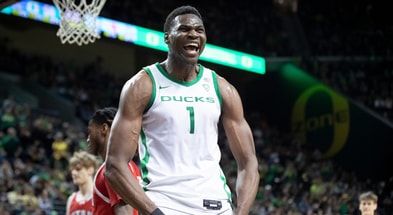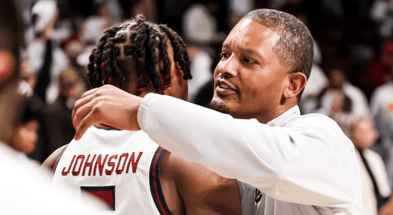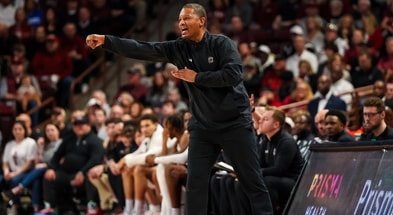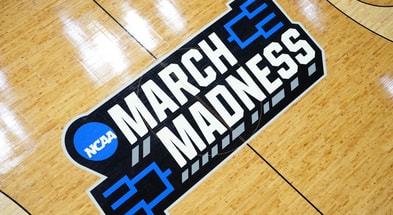One-Upping Tobacco Road: The story of Carolina Coliseum and its 12,401(ish) seats
Alan Piercy is the author of A Gamecock Odyssey: University of South Carolina Sports in the Independent Era (1971-1991). The following was originally published on Alan’s South By Southeast newsletter.
“You’d better believe it will be the landmark of Columbia. I’ve worked on projects around the world, and I consider myself fortunate to be in on this thing.” – George O’Wyce, lead project engineer, Lyles, Bisset, Carlisle & Wolf Architects
Frank McGuire had a few scores to settle in the spring of 1964.
He had accepted the head basketball coaching job at the University of South Carolina, marking a return for the fiery Irishman to the Atlantic Coast Conference, where seven years earlier he led the University of North Carolina to a national championship.
McGuire’s goals involved replicating his success at earlier stops to be sure. Besides his ‘57 title at UNC, he had taken St. Johns (his alma mater) to the championship game in 1952.
But it went beyond championships. McGuire wanted a big-time arena, a venue audacious enough to match his own ambitions. Moreover, he wanted one just a little better (just a little bigger) than N.C. State’s 12,400-seat Reynolds Coliseum in Raleigh, then the largest arena south of New York’s Madison Square Garden.
University brass provided McGuire ample assurances a modern arena would be built. Still, he insisted on a one-year contract in ‘64, and again the following season, taking a “trust, but verify” approach to those assurances.
One of the biggest points of contention during his days at UNC had been the school’s failure to replace outdated Woollen Gymnasium with a new arena. After McGuire’s ‘57 team went 32-0, defeating Wilt Chamberlain’s Kansas Jayhawks for the national championship, McGuire felt sure it would happen. Still, the state of North Carolina was unwilling to fund a more adequate venue. The Tarheels frequently played their home games at larger arenas in Charlotte or Greensboro in order to accommodate the demand for tickets.
McGuire would be stepping into a similar situation at South Carolina. The University had long outgrown the antiquated Carolina Field House. Built in 1927, with a seating capacity generously listed at 3,200, the field house was showing its age.
Even before McGuire’s arrival, the venue could no longer accommodate the student body which had grown to 6,800 by 1963, much less local fans.
Enrollment was projected to swell to 15,000 by 1970 amidst the surge of Baby Boomers entering college. The University needed a new facility as badly as McGuire wanted one.
The time was right for big new things in Columbia.
A template to follow – Everett Case and Reynolds Coliseum
Construction on N.C State’s Reynolds Coliseum began in 1942, but U.S. involvement in World War II forced abandonment of the project. It stood throughout the war years a hulking mass of concrete and steel girders on State’s central campus.
After the war, capital improvements focused on the building of new classrooms and dormitories. The bones of Reynolds waited still.
When Everett Case came to N.C. State from basketball-rabid Indiana in 1946, he revived the long-dormant project. Bethany Bradsher’s 2011 book, The Classic, chronicles Case’s rise and the big-time brand of basketball he brought to North Carolina. Case had big dreams for his new university, and Reynolds Coliseum symbolized the greatness that could be.
Originally designed as an exact replica of Duke’s 9,000-seat Indoor Stadium, Case argued that was not going to be big enough for the crowds he expected to draw. Case’s enthusiastic badgering and early success were enough to convince university officials.
Because the steel girders were already in place, outward expansion along the sidelines was out of the question. Plans were altered by expanding the two ends of the arena. The changes resulted in 3,400 additional seats for a total capacity of 12,400.
“The Old Grey Fox,” as Case was known, with his neatly-groomed mane of grey hair, established a recruiting pipeline from his native Indiana, bringing in Hoosier talent and quickly elevating the Wolfpack program, known then as the “Red Terrors.”
Case’s first State squad finished 26-5, a twenty-game improvement over the prior season. During his first ten seasons at State, Case compiled a stunning 265-58 record (.804) and eight conference championships.
Case was a consummate innovator and promoter. He introduced customs such as dimming the arena lights during pregame player introductions, and cutting down the nets after big wins. He had an organ installed, which provided major-league ambiance.
Case also installed a “noise meter,” a vertical row of light bulbs in the rafters which would light up in proportion to the level of crowd noise. The meter would whip the crowd into a deafening roar as they collectively tried to illuminate the final bulb.
Unbeknownst to the crowd the meter was controlled by a Coliseum employee with a series of switches who would decide when the frenzied crowd had earned that final red bulb. It was further evidence of Case’s genius as a promoter.
Case’s pride and joy, however, was the introduction of his holiday basketball tournament, the Dixie Classic. An Indiana tradition, holiday tournaments were a new concept in Carolina. Case’s Classic transformed what had previously been a sleepy time of the season into the most anticipated holiday tournament in all of college basketball.
The Dixie Classic pitted the “Big Four” North Carolina schools, N.C. State, UNC, Duke and Wake Forest, in a field with four schools from outside the state. Over the years, that lineup included some of the heavyweight programs of the day, including Michigan State, Cincinnati, Louisville, Seton Hall, and teams from as far away as Oregon State and Southern California.
In short order, Dixie Classic tickets became coveted items, and the Classic played before raucous sellout crowds.
Amid Case’s splashy success at State, UNC looked to upgrade it own program. By 1952, the Tarheels had lost fifteen-straight games to Case’s Wolfpack.
William Carmichael, chancellor at UNC, had lived for a time in New York and knew McGuire by reputation. He had also seen McGuire’s St. John’s team upset N.C. State in Reynolds Coliseum during the ‘52 East Regional en route to their championship game appearance. Carmichael was also a Catholic, giving him another connection with McGuire.
In Don Barton and Bob Fulton’s 1995 biography of the coach, McGuire says, “Billy Carmichael told me that they needed a coach who could compete with Everett Case, and he felt that I was the coach that could do it.”
McGuire accepted the head coaching job at UNC in the spring of ‘52, and would indeed reverse the fortunes of the struggling Tarheel program.
The Dixie Classic provided a distinct home court and recruiting advantage for Case’s club, an advantage McGuire found unfair. Still, McGuire developed a grudging admiration for what Case had accomplished in Raleigh.
Grudging admiration aside, the coaches’ personal relationship could be prickly.
McGuire said of Case, “He told me he never wanted to shake my hand upstairs – in public. ‘Let’s shake hands down here,’ he would say. He didn’t want us to look too friendly in public. He wanted to look like we were enemies. ‘You sell more tickets that way,’” McGuire said, quoting Case. He added, “I was never really close to Everett Case. Nobody was.”
Nevertheless, McGuire recognized big-time success when he saw it, and he wanted nothing more than to outdo Case at his own game.
By 1957, the Tarheels had surpassed Case’s program with “McGuire’s Miracle,” a 32-0 record and the first national championship for UNC and the nascent Atlantic Coast Conference.
McGuire would ultimately leave UNC in 1961 amid NCAA sanctions due to alleged recruiting improprieties and ongoing frustration over lack of movement on a new arena.
He landed in the NBA, coaching the Philadelphia Warriors and their dominant center, Wilt Chamberlain in 1961-62. Chamberlain famously scored his 100-point game during that season during a win over the New York Knicks.
When the Warriors franchise moved to San Francisco following the season, McGuire declined to move his family across the country. He left basketball for two years, working in the private sector in his native New York.
But basketball was not done with Frank McGuire. In 1964, he returned South with his sights set on reviving another flagging ACC program, this time at the University of South Carolina.
Getting to work
McGuire quickly reopened his New York City recruiting pipeline, signing a freshman class of Jack Thompson, Skip Harlika, Frank Standard, and Skip Kickey. They were all tough New York area kids who would be the pioneers of South Carolina’s basketball renaissance.
With freshmen ineligible for varsity play under NCAA rules in those days, the “Four Horsemen,” as they came to be called, could only watch as the varsity Gamecocks struggled to a 6-17 (2-12 ACC) finish in 1964-65.
McGuire’s second team improved to 11-13 (4-10) in 1965-66. Despite the losing ledger, a thrilling two-point victory at home over sixth-ranked and Final-Four bound Duke showed what was possible in Columbia.
“The field house was crazy,” Harlika recounted to The State’s Bob Spear in a 2017 interview. Thompson added, “People were stomping and chanting, ‘Beat Dook, Beat Dook, Beat the hell out of Dook.’”
Beyond that signature win over the Blue Devils, McGuire had signed the nation’s second-highest-rated recruit in 1965. Mike Grosso, a 6’11 dynamo from Raritan, New Jersey rated only behind UCLA’s Lew Alcindor in recruiting rankings. He was dominant on the freshman squad, averaging over 22 points and 26 rebounds per game.
With Johnson, Harlika, Standard and Kickey returning for their junior seasons and Grosso moving up to varsity, optimism around the Gamecock program reached unprecedented heights.
Amid the excitement just weeks after finishing the ‘65-66 season, USC unveiled plans for their highly anticipated new arena.
A tantalizing glimpse at “Memorial Hall”
On May 11, 1966, McGuire along with newly-hired football coach and athletics director, Paul Dietzel, met with members of the media to unveil architectural renderings of what was then called “Memorial Hall.”
Not coincidentally, Dietzel also used the occasion to announce the University had finally signed McGuire to a long-term contract, though he demurred on the details.
From the outset, McGuire had N.C. State’s Raynolds Coliseum in mind. He told reporters, “I’m reminded of the great deeds of Everett Case, and the building of Reynolds Coliseum, which he instigated at Raleigh, and the impact it had on basketball in this entire area.”
McGuire continued, “It enabled Case to bring the greatest teams in the nation to Raleigh,” adding, “I can foresee that the same thing will happen here.”
Columbia Mayor Lester L. Bates told the assembled reporters that when the city lost its bid to build a similar coliseum several years earlier, he warned Columbia should either build a facility or widen the highway to Charlotte. “But now,” he quipped, flushed with civic pride, “compared to Columbia’s building, the Charlotte Coliseum looks like an outhouse.”
Even as a scale model the proposed coliseum was dazzling. Sitting on two full city blocks, the coliseum was a Mid-Century gem, sleek and modern and emblematic of everything the University and the Capital City hoped to become.
The seven-million-dollar cost of the structure ($61.2M adjusted) would be raised by a series of revenue bonds, repaid largely by tuition fees and seat taxes. The city would contribute $600,000 in land, and the federal government would chip in half a million in Higher Education Act funds.
The contractor was a Charlotte firm, McDevitt & Street, and the initial timeline stipulated a March, 1969 opening.
By early 1967, officials announced a change in the name of the new facility to Carolina Coliseum, though The State columnist Bob Tolbert opined “McGuire Mansion” would be a more creative choice.
In an August, 1967 press conference, USC President Thomas Jones announced an updated schedule would allow for opening of the Coliseum in time for the 1968-69 season opener on December 1, 1968 (later moved to November 30).
“We cut off about four months by completing work on the roof early,” noted George N. Stearns of McDevitt & Street, “so we can work inside during the winter.”
Dietzel added that USC had already placed a bid to host the 1970 ACC Tournament, but with the advanced timeline, they could bid on the ‘69 tournament. The ACC Tournament had never been held outside of North Carolina.
During the same press briefing, Lee Herbert, who would be the Coliseum’s manager, displayed a large box representing the size of the coliseum. From the box he pulled out twelve foam rectangles, each representing the size of buildings then in downtown Columbia which could theoretically fit inside the spacious new building. “This will give you an idea of the size of the Coliseum,” he said.
By September, ‘67, the structure began to take shape, as forty-four sections comprising the massive space-frame roof were lifted into place. Each section was twenty feet by one hundred-forty-five feet, and weighed forty-five tons. The sections were lifted by massive cranes one-hundred feet in the air and attached to the corresponding forty-four exterior columns.
Nobody in Columbia had seen anything like it before. Gawkers gathered daily along the sidewalk across Assembly Street on a gentle slope north of the site, giving them an excellent view. Some downtown workers spent their lunch hours gazing out as the dinosaur-sized cranes deftly lifted roof sections into place.
The Coliseum’s slow rise throughout 1967 and ‘68 was a spectacle to behold, and excitement throbbed across the city.
The State’s Bob Tolbert interviewed an iron worker whom he had seen only minutes before nonchalantly walking along iron beams high above the ground, cool amid the cacophony of construction racket. Tolbert asked the high walker how he got into that line of work, to which the ironworker quipped, “Well, I used to drive a school bus, but my nerves gave out.”
A symbol of hope during a difficult year
As 1968 unfolded, construction on the Coliseum moved forward at a fevered pace. Crews worked nine-hour days, six days a week, and as late summer approached longer hours ensued. It was a race against time, and there was no where else for the Gamecocks to go.
Shortly after the 1967-68 season ended, two mysterious fires just weeks apart destroyed the Carolina Field House. Whispered speculation persisted that McGuire may have been involved, unhappy with the pace of progress on the Coliseum and hoping to instill a sense of urgency.
McGuire, a New York City guy with a vast network of connections, would have known people willing to accomplish such a thing. Fire department investigations were inconclusive, so we may never know for sure. Regardless, the destruction of the Field House presented a “burn the ships” moment for USC both literally and figuratively.
1968 was a year of fire across the country. The Vietnam War raged, creating bitter philosophical and political divides. On February 6, state highway patrolmen opened fire on a group of protestors at South Carolina State University, killing three and wounding 28 in what became known as the Orangeburg Massacre.
Two months later, on April 4, an assassin’s bullet ended the life of Martin Luther King, Jr, just a day after his eerily prophetic “Mountaintop” speech in Memphis. Overwhelming grief and outrage fueled riots in cities across the country over the ensuing days and weeks.
On June 6, U.S. Senator and presidential candidate Robert F. Kennedy met the same tragic fate following a campaign stop in Los Angeles. On the heels of Kennedy’s murder, riots gripped Chicago during the Democratic National Convention.
It was an exhausting, bloody and riotous year. As the Coliseum rose during those months, it provided a visible symbol of hope to Columbians who tracked its progress day by day. In that haunted year, Carolina Coliseum provided a rare uniting symbol.
It was more than a building. It was a galvanizing token of collective hopes and dreams, and of what could be.
Mad scramble to the finish
By September, installation of the Coliseum’s “Solar Bronze” plate glass windows had begun, as had spray-painting of the exterior stucco walls, transforming the building from grey to its soon-familiar light beige. American Seating Company had already begun installing the first seats, and trucks delivered more seating every day. Ray Benson, the Coliseum manager said plumbing was 99% complete, electrical 90%.
The opening game loomed just over two months out, a November 30th date with Auburn.
By mid-October, Carolina began pre-season practice at the Naval Reserve Armory on campus. The only returning starter from 1967-68’s 15-7 squad was junior Bobby Cremins, who averaged 9.1 points, 7.1 rebounds as a sophomore.
The Four Horsemen were lost to graduation. Mike Grosso, the all-everything center who McGuire boldly declared would bring championships to USC, never played a varsity game at South Carolina after he was ruled academically ineligible by the Atlantic Coast Conference.
The controversial episode, which David Cloninger of Charleston’s Post & Courier, detailed brilliantly in his October 22, 2022 piece, was one act in a bitter drama between USC and her ACC counterparts which ultimately led to a conference exit in 1971.
But McGuire, who cultivated an “us against the world,” coaching style, used the ongoing drama to great effect in motivating his team. And he had not stopped recruiting after the Grosso incident. Not by a long shot.
The highly-anticipated arrival of four sophomores to the varsity squad had fans buzzing. The newcomers were led by hot-shooting 6’3” guard John Roche and his high school teammate at New York’s LaSalle Academy, 6’10 rebounding machine Tom Owens. Steady 6’0” guard Billy Walsh and 6’8” enforcer John Ribock joined Roche, Owens, and junior Cremins in the starting five.
McGuire and his “whiz kids,” as they became known, were still salty over the Grosso incident, and eager to flex some muscle in the ACC. They were four gritty New York kids and one tough-as-nails Augusta, Georgia native (Ribock); a classic Frank McGuire quintet.
Meanwhile, work continued at a fevered pace inside the arena of the Coliseum. Classroom areas would not be completed for months, as all efforts focused on preparing the arena itself for the November 30th tipoff.
A November 7th update to the President’s office by USC staff engineer G.T. Perry sounded a cautiously optimistic tone, noting that 3,750 seats had been installed. If all went well with laying the rubberized Tartan floor, the team would be able to practice in the Coliseum by November 23rd.
Indeed, seats were still being installed just hours before tipoff on November 30th.
Fans walked blocks to get to the arena as parking lots had not been completed. They navigated mounds of clay, and kicked at wooden planks forming concrete walkways which had been poured just days before. They gawked at construction equipment still warm from use. Many of the large garnet double doors leading from the concourse to the arena leaned against walls, uninstalled.
Yet, upon entering the playing arena, fans were amazed at what they found. It felt massive, cavernous, in comparison to the more familiar 3,200-seat Carolina Field House. Fans in the upper rows marveled that they could see the ball bounce seconds before they could hear it.
The seats were lavishly upholstered in Gamecock garnet. The aroma of popcorn and the “new car” smell of recently unpackaged seats pervaded the arena.
Led by Tom Riker’s 19-points, the freshman squad defeated Spartanburg Junior College 55-52 in the 6pm undercard, the long-forgotten first game ever played at Carolina Coliseum.
The varsity tipped off at 8pm before an announced crowd of 12,088 fans. The Gamecocks started fast, building a twelve-point lead early in the first half, and still led by ten at halftime.
Auburn shooting heated up in the second half, and the Gamecocks went cold. The Tigers chipped away throughout the second half and eventually took the lead. A Ronnie Jackson free throw put Auburn up by three with 2:36 remaining.
A Bobby Cremins free throw pulled Carolina within two at the 1:12 mark. When he missed the bonus, Owens managed a tip-in, knotting the score at 49.
Carolina regained possession with 49 seconds remaining after Auburn failed to convert on their next possession. After a time out, Roche frustrated Tiger defenders with nifty ball handling as the clock ticked down.
Tension among the packed arena built with each passing second.
As the clock ticked below five seconds, Roche made his move, rising for a jumper from the key. Every eye in the building followed the ball’s arcing path as it hit the rim and bounced off the glass before settling safely into the net.
Pandemonium ensued as the clock ticked to 0:00 with Carolina on top 51-49.
The State’s Herman Helms wrote of that opening night, “The building was elegant, the crowd was big and noisy and there was a gasser of a finish.” He quoted a perspiring McGuire in the USC locker room moments after the finish, “What a way to open a new building,” the coach said grinning, “But I didn’t plan it this way… I’m not that good a script writer.”
A jubilant Cremins chimed in, “We needed the game and John won it for us. I love him. I think I’m going to kiss him.”
But about those 12,401 seats…
For decades, USC media guides listed arena seating capacity at 12,401. Though seating could expand up to 13,500 for other events – concerts, etc – basketball capacity was always 12,401.
Or so I thought. During research for this article, I found that was not always the case.
Newspaper reports throughout 1967 and ‘68 speculated on the arena’s basketball capacity, largely citing university officials at various points throughout the planning and building phases. Estimates ranged from 13,000 to 12,000, with numerous citations in between, from 12,121 to 12,214, to the vaguely stated “more than 12,000.”
Attendance at the first game, a confirmed sellout, was listed at 12,088. The 1969-70 and 1970-71 USC basketball media guides both note “upholstered seating for 12,133 for basketball.”
It was not until the 1971-72 media guide – the first season after leaving the ACC – that arena capacity was listed at 12,401.
Exactly one seat more than N.C. State’s Reynolds Coliseum.
With that one extra seat, Carolina Coliseum could lay claim to the being the largest arena in the Southeast, at least until Atlanta’s 16,300-seat Omni Coliseum opened in October, 1972.
Was the adjustment a parting thumb in the eye from McGuire to his former ACC rivals? Nobody knows for sure at this point, but journalists who covered the program in those days believe it would have been a classic McGuire move.
Sid Kenyon has worked in various capacities at USC since the 1970’s, and has been the facilities manager at Colonial Life Arena and Carolina Coliseum for many years. He knows the Coliseum better than just about anyone alive.
“I’m sure there was a hand count at some point, but I don’t have any record of it,” Kenyon said. He laughed thinking about the massive case of one-upmanship 12,401 represented.
Though we’ll probably never know for sure how the change in listed seating came about, he said, “It had to be McGuire.”
“The House that Frank built” lives on
The squeak of sneakers and the rip of leather through nylon still fills the air at Carolina Coliseum. Though it has been twenty-one years since the final men’s game was played there, Dawn Staley’s Gamecock women’s team played one final contest at the old Coliseum due to a scheduling conflict at Colonial Life Arena in 2013. The Gamecocks defeated LSU 66-59.
Since that time the university has transformed the Coliseum into a full-time practice facility for the Gamecock men’s and women’s programs. The lower retractable seats were removed and auctioned off soon after that 2013 game, and two full-size courts now inhabit the space.
They called it “The House that Frank Built,” back in the day, that grand structure which rose at the corner of Assembly and Blossom during a turbulent year. It was a monument to basketball, built of concrete and steel and hopes and dreams, and maybe just a dash of retribution mixed into the mortar.
It embodied the aspirations of a program, a university, and an entire state which had spent a decade and a half toiling in the shadows of its blue-blooded rivals along Tobacco Road.
As to whether it sat 12,133 or 12,401, or somewhere in between, it matters little now, a half-century down the road.
And that’s just as well.
The mystery is better than knowing anyway.
